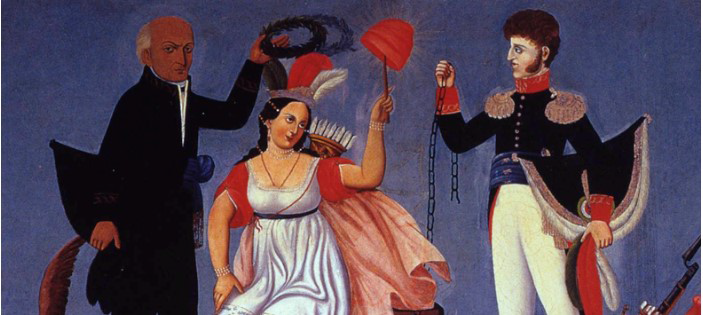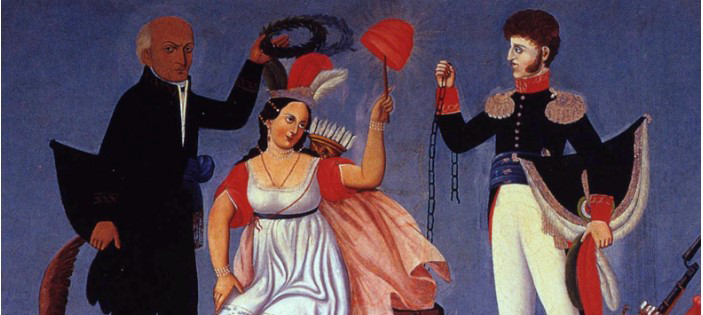By Citizenship series on the September 2019 Edition
The Mexican struggle for independence began with the Grito de Dolores (Cry of Dolores). In September of 1810, Miguel Hidalgo, the parish priest of the small town of Dolores in central Mexico, uttered the country’s cry for independence. He called not only for liberation from Spain, but also for the end of slavery and the return of lands to the indigenous inhabitants.
A highly educated creole, Hidalgo had read the works of Enlightenment writers and had been an important community organizer in Dolores. While Hidalgo’s efforts led to both the stripping of his priestly title and his gruesome execution, his cry set in motion the Mexican fight for independence.
Hidalgo’s visual trademarks were his baldness and religious dress both shown in Antonio Serrano’s Portrait of Miguel Hidalgo. He is depicted inside his study, minimally decorated with books, a desk, and a small reproduction of the Virgin of Guadalupe.
While the library reflects Hidalgo’s erudition, the depiction of the iconic Virgin of Guadalupe alludes to both his faith and the image’s historical significance in the struggle for independence: Hidalgo marched with a banner decorated with the Virgin of Guadalupe, a foil to the Virgin of los Remedios, which was used by the Spanish loyalists. In this way, the Virgin of Guadalupe became a symbol of Mexican resistance and independence, and was featured on the earliest Mexican flag.
After Hidalgo’s failed attempts at instigating a revolution, José María Morelos, another revolutionary priest, and the army general Agustín Iturbide continued the struggle (IIturbide had originally fought for the Spanish royalists, but he switched sides following his dismissal from the armed forces due to accusations of unwarranted violence and misuse of funds).
The Plan of Iguala, a proclamation which Iturbide authored together with the rebel leader Vicente Guerrero in 1821, proclaimed Mexico’s independence from Spain while reaffirming the country’s alliance with the Roman Catholic Church and establishing equal rights for both criollos and peninsulares. On August 24, 1821, with the signing of the Treaty of Córdoba, Spain finally recognized the independence of the First Mexican Empire, led by none other than Iturbide himself.

Source (images and article): SmartHistory.org
The full edition or view it online
Manzanillo Sun’s eMagazine written by local authors about living in Manzanillo and Mexico, since 2009




